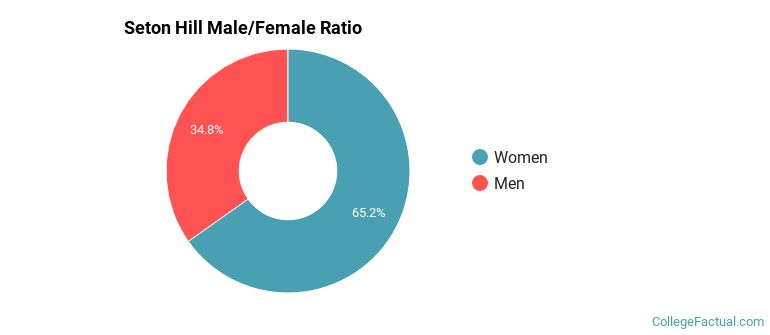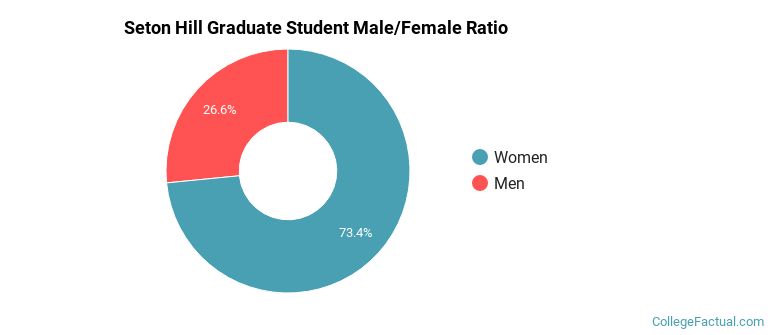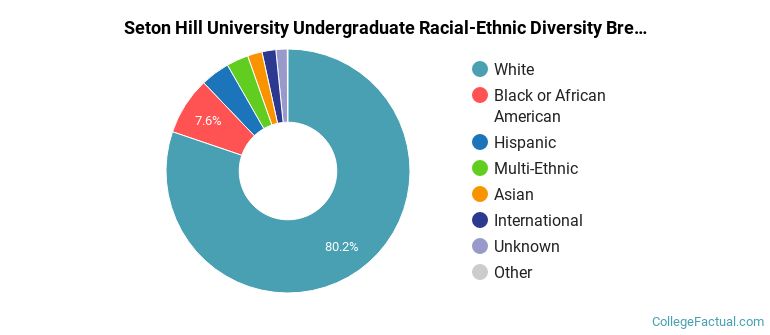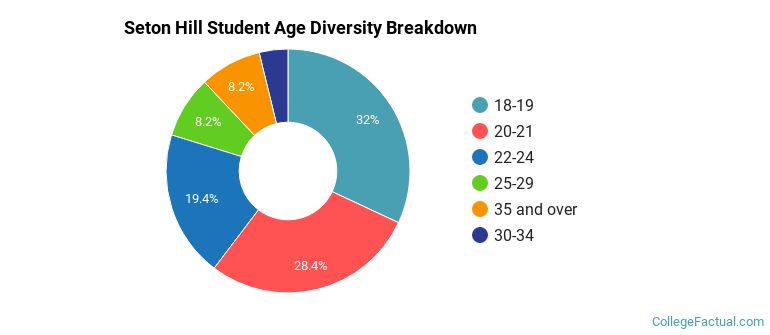 by our College Data Analytics Team
by our College Data Analytics TeamSeton Hill total enrollment is approximately 1,935 students. 1,514 are undergraduates and 217 are graduate students.
Male/Female Breakdown of Undergraduates
The full-time Seton Hill undergraduate population is made up of 65% women, and 35% men.

For the gender breakdown for all students, go here.
Seton Hill Racial/Ethnic Breakdown of Undergraduates

| Race/Ethnicity | Number |
|---|---|
| White | 1,220 |
| Black or African American | 127 |
| Hispanic | 64 |
| Unknown | 42 |
| Multi-Ethnic | 32 |
| Asian | 23 |
| Native Hawaiian or Pacific Islander | 1 |
| International | 0 |
See racial/ethnic breakdown for all students.
Male/Female Breakdown of Graduate Students
About 76% of full-time grad students are women, and 24% men.

For the gender breakdown for all students, go here.
Seton Hill Racial-Ethnic Breakdown of Graduate Students

| Race/Ethnicity | Number |
|---|---|
| White | 168 |
| Unknown | 18 |
| Black or African American | 10 |
| Hispanic | 10 |
| Multi-Ethnic | 6 |
| Asian | 4 |
| Native Hawaiian or Pacific Islander | 1 |
| International | 0 |
See racial/ethnic breakdown for all students.

| Race/Ethnicity | Number |
|---|---|
| White | 1,560 |
| Black or African American | 149 |
| Hispanic | 77 |
| Unknown | 69 |
| Multi-Ethnic | 41 |
| Asian | 31 |
| Native Hawaiian or Pacific Islander | 2 |
| International | 1 |

There are approximately 1,310 female students and 625 male students at Seton Hill.
Seton Hill ranks 853 out of 2,183 when it comes to geographic diversity.
27.58% of Seton Hill students come from out of state, and 1.09% come from out of the country.

The undergraduate student body is split among 22 states (may include Washington D.C.). Click on the map for more detail.

| State | Amount |
|---|---|
| Pennsylvania | 260 |
| Ohio | 18 |
| Maryland | 17 |
| New York | 16 |
| New Jersey | 10 |
A traditional college student is defined as being between the ages of 18-21. At Seton Hill, 53.28% of students fall into that category, compared to the national average of 60%.

| Student Age Group | Amount |
|---|---|
| 18-19 | 697 |
| 20-21 | 619 |
| 22-24 | 424 |
| 25-29 | 179 |
| 35 and over | 179 |
| 30-34 | 83 |
| Under 18 | 0 |
Footnotes
*The racial-ethnic minorities count is calculated by taking the total number of students and subtracting white students, international students, and students whose race/ethnicity was unknown. This number is then divided by the total number of students at the school to obtain the racial-ethnic minorities percentage.
References
Department of Homeland Security Citizenship and Immigration Services
Read College Factual's Diversity Ranking Methodology.